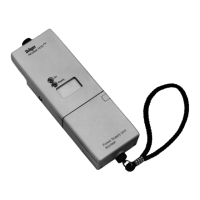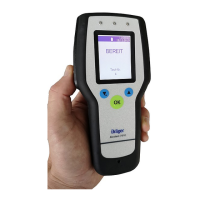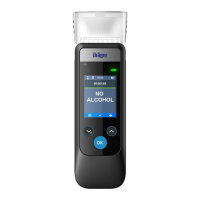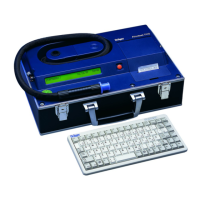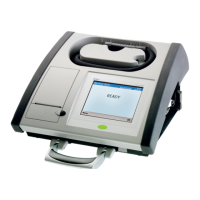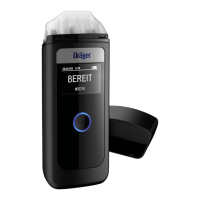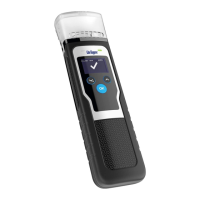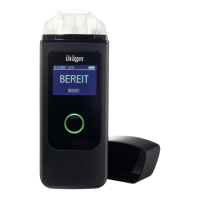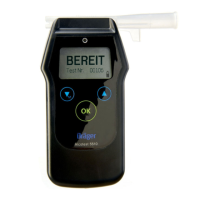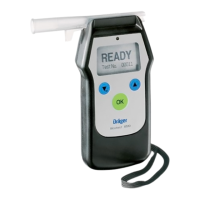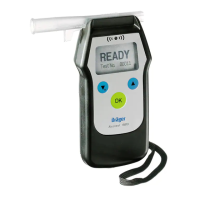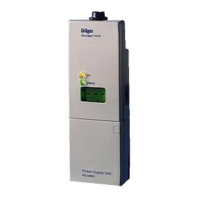
Do you have a question about the Dräger Alcotest 7410 GLC and is the answer not in the manual?
| Type | Breathalyzer |
|---|---|
| Measurement Principle | Electrochemical sensor |
| Resolution | 0.01 mg/L |
| Operating Temperature | -5 °C to +50 °C |
| Measurement Range | 0.00 to 2.50 mg/L |
| Display | LCD |
| Data Storage | Up to 1000 test results with date and time |
| Power Supply | Rechargeable battery |
| Storage Temperature | -20 °C to +60 °C |
Ensures proper results by checking calibration every two weeks. Performed by a designated calibrator.
Details power supply options (rechargeable/disposable) and the 'Lo Bat' indicator.
Step-by-step guide for conducting a breath test using the Alcotest 7410 GLC.
Describes error codes ('E0') and actions for incomplete or weak breath samples.
Explains digital results (0-49 mg%, 'A', 'F') and their meaning.
Explains how mouth alcohol contaminates samples and the 15-minute waiting period.
Advises stopping smoking and waiting 3 minutes due to sensor damage risk.
Specifies avoiding use near police radio equipment within 30 cm.
Warns against blocking the rear vent, which disrupts sampling.
Notes cold temperatures (<= 5°C) affect operation; use inside police vehicle.
Advises against subject holding instrument and using wrist strap.
Explains how BAC changes during the delay between roadside and evidentiary tests.
Discusses how residual mouth alcohol can cause higher ASD readings.
Explains instrument precision (+/- 10 mg%) and how it causes apparent discrepancies.
Cause: discharged power. Remedy: charge or replace batteries.
Cause: flat power/defective connection. Remedy: recharge or replace.
Cause: instrument malfunction. Remedy: return to calibrator/Dräger Service.
Cause: not ready for measurement. Remedy: wait for green 'Ready' light.
Cause: subject not blowing hard/evenly. Remedy: remind subject.
Cause: sensor fault. Remedy: switch off/on; replace sensor if persists.
Cause: fault in sampling system. Remedy: repeat measurement; advise calibrator.
Cause: instrument malfunction. Remedy: advise calibrator/Dräger Service.
Details relevant Criminal Code sections for ASD use and drinking-driving offenses.
Explains how ASD results are used for license suspension under the Traffic Safety Act.
Discusses divisional/departmental policy and highlights conditions for ASD use.
Action: investigate drugs/illness or release suspect.
Action: suspend license and release driver.
Action: demand evidentiary test, suspend license, and potentially charge.
